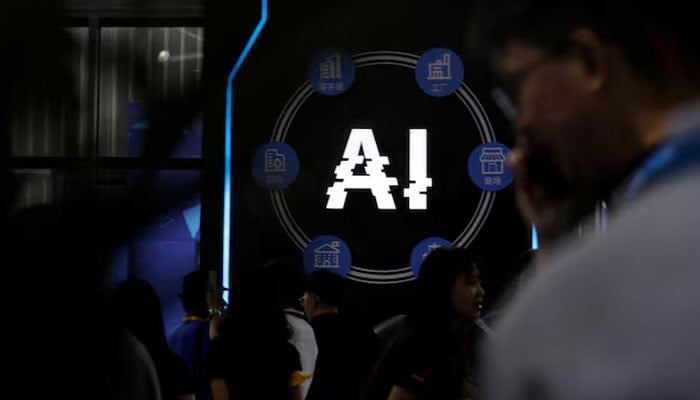Imagine 2035. There are no more physical stores or universities. Artificial Intelligence (AI) has made education universally accessible and completely free.
Simply voice the prompts to learn new skills or earn a degree. In the instant, you are transported to a completely immersive virtual classroom through AI-powered smart glasses. Perhaps Albert Einstein himself is studying astrophysics on a space station that is not taught. Choose subject, instructor (even fictional or historical figures) and settings. And it’s all free, on demand and personalized.
This is not science fiction, it’s a very plausible scenario in the next 10 years. At the current pace of AI development, combined with platforms such as Virtual Reality (VR), Augmented Reality (AR), and Meta, the ideas of physical classrooms, universities, and even human teachers can become outdated and redundant.
Let’s rewind to today. We stand on the brink of the most dramatic change in human history. AI, quantum computing, robotics, genetic engineering, nanotechnology and space exploration are converging, creating an era of exponential advancement. However, today’s AI is as impressive as it looks, and is still in its early stages. It rivaled the Internet in 1992 before Google, Amazon or Apple became a common name.
Consider this: 20 years of personal computers were needed to reach 30% penetration in the US population. While TVs took 12 years, smartphones took seven years and smart speakers for four years, generative AI exceeded all records, reaching over 2 billion users worldwide within three years.
The race continues. Openai, Google, Meta, Microsoft, X, and countless startups have invested hundreds of millions of dollars to control this space. Within a few years, we will see the rise of billions of AI-driven companies, solve problems and reconstruct the world in ways previously unimaginable.
In education, AI is already disrupting traditional teaching and learning models. Students can now generate detailed essays, research papers, videos, and even code or data visualizations with simple prompts. There is no need to acquire basic knowledge. Within a decade, AI is expected to evolve into artificial super intelligence (ASI), allowing you to perform tasks with today’s brightest PhD combination. In that world, you might ask why you rationally want to ask whether an ASI is much more accurate and efficient than any human being, why you earn a degree in medicine, law, or engineering. Why study at all when a machine can think of and perform all the tasks for you?
Even today’s AI models, such as the ChATGPT-4 and GROK-4, have passed the most stringent standardized tests, such as SAT, GRE, GMAT, LSAT, USLME. For example, the ChATGPT-4 plays in the top 10% of the GRE test taker and exhibits IQ equivalent functionality in the 120-140 range. The Grok-4 released by X last week claims to be even smarter. Beyond raw intelligence, these AI models simulate emotional intelligence, provide empathic responses, and act as capable mentors, therapists, or counselors.
At the school level, AI-powered platforms like Khan Academy already incorporate personalized learning apps. AI assistant Khanmigo can generate lessons in tasks that take teachers days or weeks in minutes. More importantly, it involves students in problem solving, not spoon-feeding answers. It also adapts to individual learning styles, evaluates understanding in real time, expanding the ability for teachers to 10 times.
However, you need to be careful here. Unsupervised use of AI risks killing creativity, critical thinking, and authentic learning. Research shows that students using AI may be better at their tasks, but often struggle with exams. Excessive dependence leads to intellectual laziness, and deep learning can be replaced with superficial results.
At the university level, the conversion is even more pronounced. For example, Harvard Business School reported that AI completed a typical case study. Usually, up to nine months of research is required in just a few minutes. AI-generated research papers, dissertations and dissertations are already flooded with academic institutions. They may meet academic requirements, but students can graduate from things they have little to learn and often struggle with real-world employment interviews.
Educators are also affected. AI is now able to create, manage and evaluate exams more efficiently than teachers. In the experiment, Harvard AI tutors consistently outperformed human tutors, providing faster feedback, personalized insights and even emotional encouragement.
However, for developing countries like Pakistan, this revolution offers a unique opportunity. AI can democratize education by leveling the arena. With AI, students in rural environments with minimal resources can access the same quality of instruction and tools as someone in an elite urban school, and significantly narrow down the gap in opportunity. With smartphones and internet connections, AI-driven, quality education must become a right, not a privilege.
Institutions such as HEC, schools, and universities must face existential questions. Traditional curriculum and methodology quickly become obsolete. There is an urgent need to redesign education to prioritize non-replicaable machines, such as human creativity, emotional intelligence, moral reasoning, and interpersonal relationships.
AI is not the enemy of education. Rather, it is a powerful tool that, when used wisely, can guide an era of personalized, efficient and inclusive learning. But, like all tools, its effects depend on how it is used. We must focus not only on learning what to think and how to think, but also on fostering why we think.
Over the next decade, the task will not be to teach students the facts. They have access to all the knowledge of the world at their fingertips. The challenge is to teach them wisdom. It’s how to judge, how to empathize, how to create, how to become a human being in an increasingly artificial world.
The writer is a former Senator and former chairman of the HEC.



